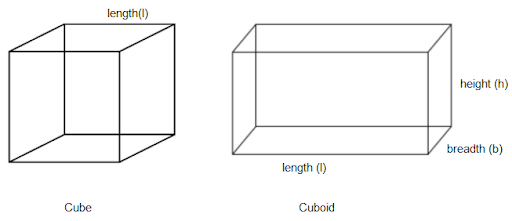An Overview of Cbse Class 8 Maths Notes Chapter 9
FAQs on Cbse Class 8 Maths Notes Chapter 9
1. What are the key concepts included in Class 8 Mensuration revision notes as per CBSE 2025-26 syllabus?
Mensuration Class 8 Notes focus on the calculation of perimeter, area, surface area, and volume of various plane and solid figures such as rectangles, squares, triangles, parallelograms, trapeziums, cubes, cuboids, and cylinders. These notes also include important formulas, differences between area and perimeter, and conversion between measurement units.
2. How can students use Class 8 Mensuration revision notes for quick and effective chapter recap?
Students can make quick summaries of key formulas and theorems, create a concept map to link topics like perimeter, area, and volume, and regularly revise solved examples to reinforce understanding. Focusing on essential formulas and practicing variety of solved questions helps in better retention and application during exams.
3. What is the easiest way to differentiate between area and perimeter while revising Class 8 Mensuration?
The perimeter is the total length around a closed figure's boundary, measured in linear units. The area is the amount of surface covered by the figure, measured in square units. Remember: perimeter = boundary length, area = surface covered.
4. What are the most important formulas to remember in Class 8 Mensuration for revision?
- Area of Rectangle = length × breadth
- Perimeter of Rectangle = 2 × (length + breadth)
- Area of Square = (side)2
- Perimeter of Square = 4 × side
- Area of Parallelogram = base × height
- Area of Triangle = ½ × base × height
- Area of Rhombus = ½ × product of diagonals
- Area of Trapezium = ½ × (sum of parallel sides) × height
- Surface Area of Cube = 6 × (side)2
- Volume of Cuboid = length × breadth × height
- Volume of Cylinder = π × (radius)2 × height
5. Why is it important to revise estimation and unit conversions in Mensuration Chapter 9?
Estimation and unit conversions are crucial because exam questions often require converting between units like cm2 and m2 or cm3 and liters. Practicing these helps prevent common mistakes and aids accurate calculation of areas and volumes as per the 2025-26 CBSE exam requirements.
6. How can concept mapping help in revising Chapter 9 Mensuration for Class 8 exams?
Concept mapping enables students to visually connect related topics such as types of figures, their properties, relevant formulas, and typical problems. This method helps in faster recall during exams and a deeper understanding of how different part of mensuration relate to each other.
7. What common mistakes should be avoided while revising and solving Mensuration questions?
- Mixing up area and perimeter formulas.
- Using incorrect units or failing to convert units properly.
- Forgetting to use height perpendicular to the base in area calculations.
- Overlooking the need for all lengths to be in the same unit before calculation.
8. What types of questions can be expected from Chapter 9 Mensuration in final exams as per CBSE patterns?
Typical questions include direct formula-based problems, word problems involving application (like finding area or volume in real-life contexts), and conceptual questions such as justifying the difference between area and perimeter or explaining why certain formulas are used for specific shapes.
9. How should students structure their last-minute revision for Class 8 Mensuration?
For last-minute revision, students should focus on:
- Writing down and practicing all essential formulas.
- Solving sample numerical questions covering each figure.
- Reviewing unit conversions quickly.
- Identifying and correcting previously made mistakes through mock test analysis.
10. What is the significance of understanding Mensuration basics for Class 8 and higher studies?
Mastering the basics of Mensuration is essential as it serves as the foundation for higher-level geometry, real-life problem-solving (such as estimating paint required or space available), and advanced mathematics in Classes 9 and beyond. It also helps in competitive exams and practical life situations involving measurements.


























